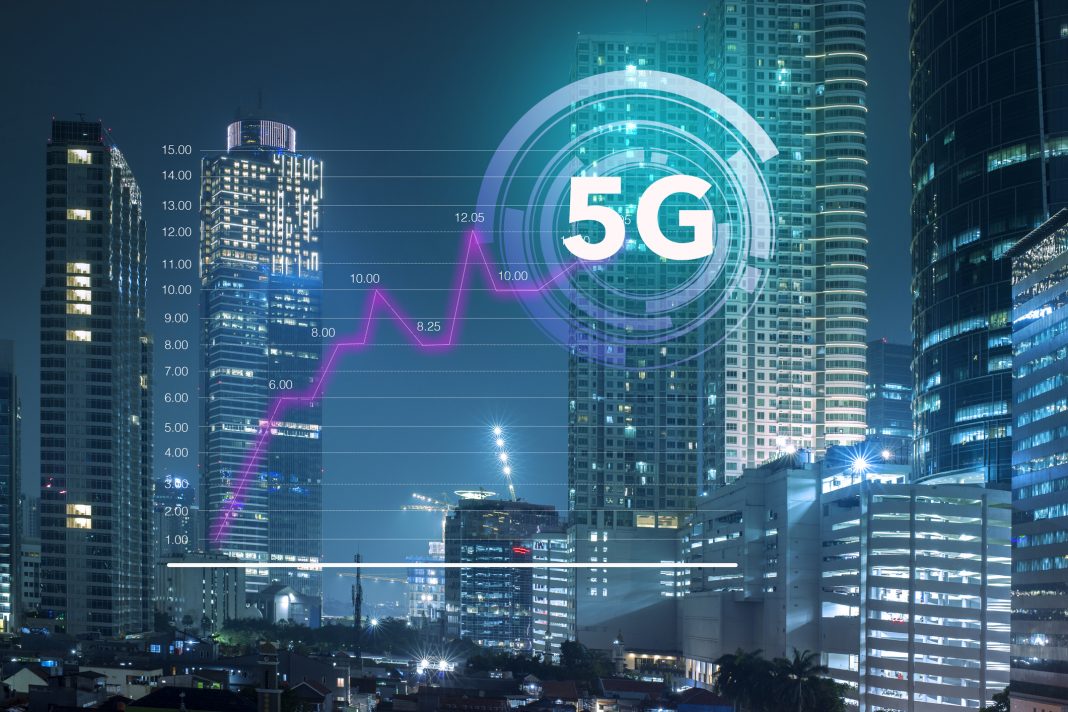5G technology will allow vast amounts of data to be transferred and analysed, offering significant opportunities for smart(er) cities and commercial real estate. Professor Richard Kingston, professor of urban planning at the University of Manchester, examines what is in store
The arrival of the fifth generation of mobile connectivity is imminent. And when 5G is rolled out across the UK and, indeed, globally, it will mark a significant turning point for many industries, not least real estate.
Now, some may state that 5G is here – leading mobile networks have certainly been keen to advertise the fact. However, the current connectivity is much closer to high-functioning 4G, still some way removed from the true potential of 5G.
The government has set a target to ensure that the “majority” of the country has access to 5G by 2027. This will require a significant investment in infrastructure – two years ago, the government’s National Infrastructure & Construction Pipeline unveiled 11 digital infrastructure projects and programmes with a total value of £6.8bn, with the aim of boosting 5G (and superfast full fibre broadband) coverage across Britain and Northern Ireland.
Clearly, the next five years are going to see marked change in mobile connectivity. And when it is properly established, 5G is expected to deliver speeds up to 100 times faster than typical 4G technology, with mobile internet speeds of more than 10 gigabits per second (Gbps).
For the consumer, this will mean frictionless browsing, downloading and streaming. However, far more pertinent are the changes that 5G’s arrival will beckon across different industries. Chief among them is the development of the so-called “smart city” and the way that property functions from a social and commercial perspective.
5G, IoT and smart cities
5G is best understood as an enabler. The technology itself is not groundbreaking; rather, it will provide the connectivity required for vast amounts of data to be transferred and analysed.
As such, the rollout of 5G will, in turn, help businesses and governments to unlock the potential of the Internet of Things (IoT) – a well-established field of digital innovation, in which everyday objects have been fitted with sensors and technology that allow them to communicate and share data via internet connections. Tech analyst IDC predicts there will be more than 41bn connected IoT devices globally by 2025. Much faster and more reliable mobile connections open up a wealth of new possibilities in the world of IoT, facilitating the creation of smart cities (or, at least, smarter cities).
A somewhat jargonistic and contested term, a smart city is essentially an urban area that uses technology, data and sensors to operate in a far more efficient manner. From traffic lights that function differently depending on traffic flows at particular junctions, through to streetlights that automatically dim or brighten depending on pedestrian usage – the transfer of real-time data over 5G networks can help save money, reduce waste, fight crime, lower carbon emissions and improve people’s day-to-day lives.
How will real estate be affected?
There can be no questioning that the combination of 5G and IoT devices will be one of the defining technological trends affecting the real estate sector in the years to come. And so, anyone developing properties today – either residential or commercial – must be aware of how to best utilise this field of digital innovation to create modern buildings or spaces.
At its core, the arrival of 5G will enable properties to themselves become smarter. Developed with in-built sensors across different rooms and features, a building will be able to communicate about its state and the behaviour within it. Some of the more common examples in the residential space include automating processes, such as changing the lighting and heating settings depending on when people are in the room; monitoring energy usage to improve efficiency; and ensuring the security of all external windows and doors.
In the commercial real estate sector, where remote working has risen exponentially as a result of Covid-19, it is likely that many organisations will operate on a hybrid model in the future, wherein staff split their time between the office and home. To aid in managing such flexible working practices, desks can be laden with sensors that will report on when they are available, while the office as a whole can be analysed to assess where space is being used or not used.
In the years to come, this combination of automated processes – wherein properties learn and evolve over time to become more efficient and user-friendly – with greater data-driven insights for the owner, user or developer of the building to the act upon, looks certain to become a mainstay of the industry.
As with any new technological trend, the key for stakeholders within the sector is to identify where the market is headed and ensure they remain a step ahead of their competitors.
 Professor Richard Kingston
Professor Richard Kingston
Professor of urban planning
Tel: +44 (0)161 275 1936
richard.kingston@manchester.ac.uk
Twitter: OfficialUoM
LinkedIn: University of Manchester














